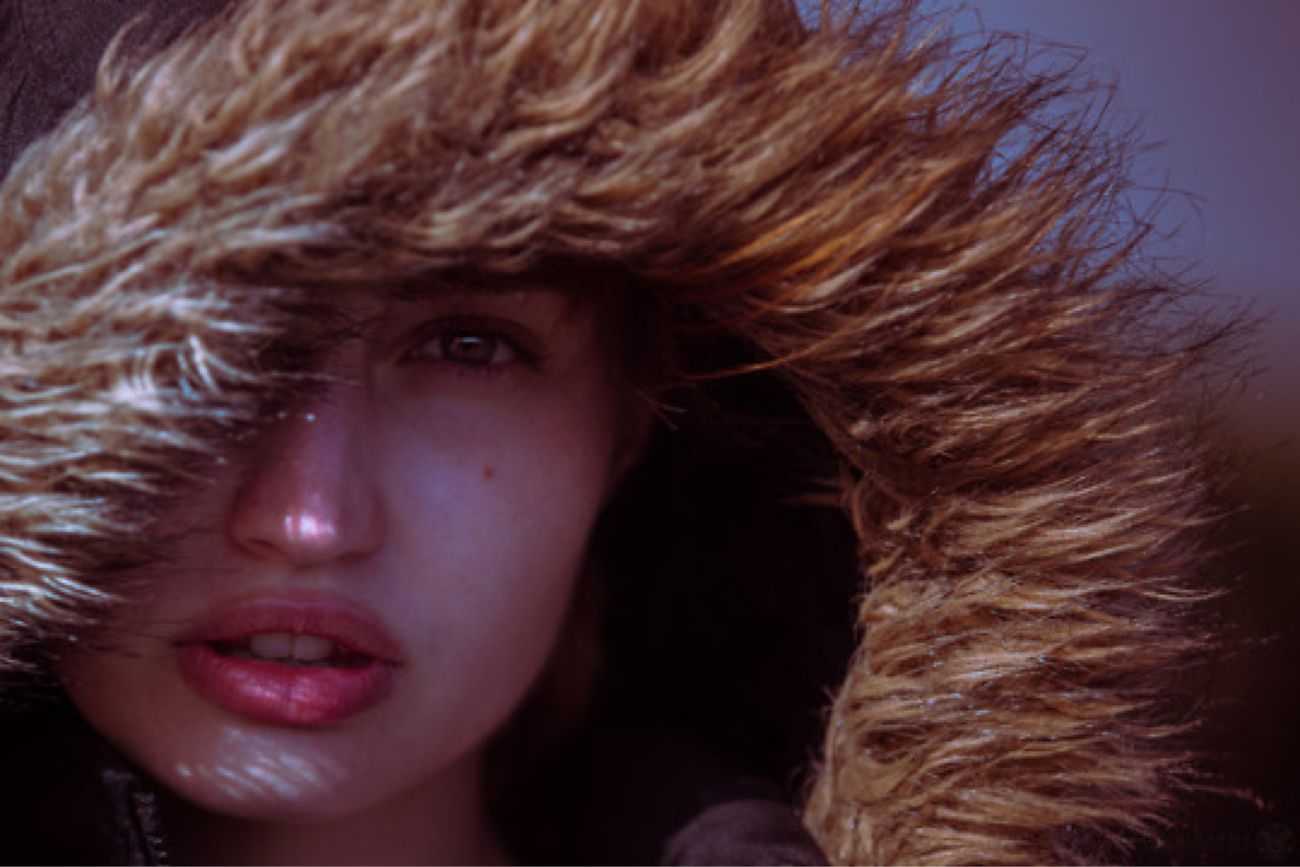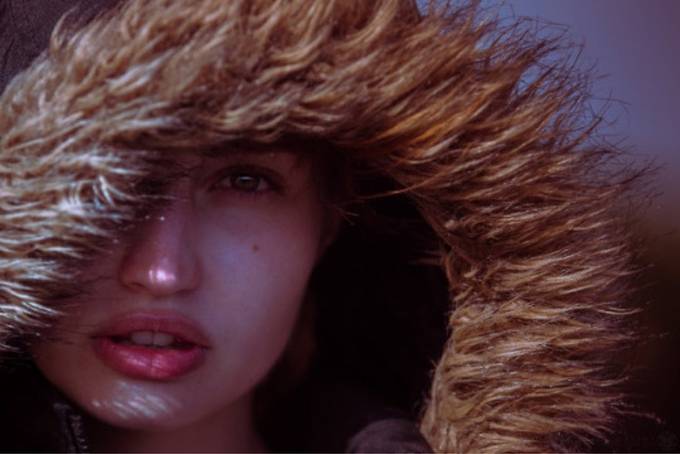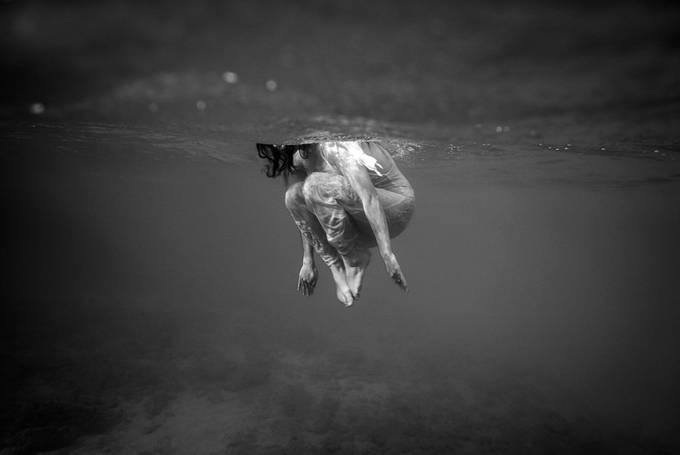We spoke to community member Benjamin Franke @Soulcraft about his photography, the inspiration behind his photos, what he carries in his camera bag, and asked him to share some tips with us.
What inspired you to be a photographer?
The answer is quite complicated but to put it simply, as a concept artist, I got tired of staying inside, alone, painting imagined compositions and characters. I wanted to travel, to connect with people, create together, and capture the painting that already exists all around us.
Starting at a very young age, I became fascinated with art and design. I spent my days conceptualizing fantasy worlds, running through thought experiments of how it would be possible for humans to reach distant stars…what would their spaceships look like? Their spacesuits? Would there be alien life? I was already developing into a concept artist at 7 years old.
Fast forward a few decades. I graduated with a BS in Entertainment Design from the Art Center College of Design. I quickly delved into a wildly oversaturated industry after pushing my passions to my limits in the most rigorous and competitive curriculum I’ve ever experienced.
Why is this relevant?
Everything we create visually, be it a painting, a conceptual design, a landscape for a video game, etc, is done within the context of a “frame”. Composition is an integral part of visual communication and storytelling. A painting is just a photo built from scratch. A photo is a painting discovered in life, held in stasis within the frame chosen by the photographer.
What was your first camera and what do you shoot with today?
If we go way back, my first digital camera was a “Jam Cam 3.0” from the year 2000 that could shoot eight 640x480 pixel photos. Insane to see how far we’ve come.
In the early 2000’s I owned a Nikon D40x for something like a “yearbook” class and at night I loved to make long exposure light paintings with it. I sold it during design school.
After my last design job in 2018, working as the lead designer for a circus in Las Vegas, I decided to buy a Sony Alpha 7RII. I'm overdue for an upgrade but I still shoot with it. In 2019 my dad sent me a box with his old collection: an Olympus OM-2n, Minolta X-700, and a Nikon FE with a bunch of old glass.
I shot my first roll of Ilford HP5 through the Olympus with Eva Villalobos and was blown away by the beauty of film. Since then I received a Mamiya 645 and an RB67 as gifts which opened me up to the world of medium format.
After that, I began experimenting with tear-off film with a Polaroid 600SE and got deep into modifying the cameras I own. My favorite film/mod I've explored so far is probably 4x5 tear off sheet-film mounted to a 3D printed film back for my 600SE.
I just bought an Agfa 8x10 from the 1920s to try my hand at 8x10 polaroids and sheet film. But I really want to explore wet plate photography.
When someone looks at your photos, what do you want them to take away from it, what are you trying to communicate?
Needless to say, my favorite subject to photograph is the fine nude, especially when juxtaposed or mimicking the shapes and textures of nature. These sweeping curves and delicate angles seem to whisper the silent names of the elements. The same subtleties are found in the intricate forms of nature, and likewise, emphasized by the dissonance of jagged and complex textures. When juxtaposed, these harmonies and contrasts celebrate the elegant beauty of the figure.
These harmonies are what I seek when capturing an image, either visibly as part of the environment or abstractly held in the emotion of a pose. Within flowing fibers of weathered wood, the same shapes are hidden in a drifting breeze through her hair. A cracked lakebed, the same marks etch her thighs. Sandstone carved by water and wind, the same curves trace her hips, her collar bone, and her spine. The feminine is nature and art in motion, alive and animated. Within the movements of the muse, a dance of mind and body in its most honest self-expression, the alchemy of alignment, a glimpse of the soul.
When working with certain models I’ve experienced transformative healing of sorts. The artistic nude is a symbol of peace, a celebration of humanity and nature, and a resistance against suppressed expression and the somewhat vulgar media we’re bombarded with daily. So much of our world’s dogmas and judgments shape how we feel about our bodies, about others, and about being seen, appreciated, and accepted. The female body is often sexualized, objectified, and distorted, unfortunately, some photographers bring this energy into their practice. The echoes of this toxic dynamic often surround male photographers, there is an understandably common lack of trust. These days, many people don’t know how they should experience nudity in a world clouded by shame and sexualized objectification. In the past few years, I’ve witnessed the beginning of a shift surrounding this subject. There is an empowering celebration of self, a stand against wrongs of the past, a blooming of sorts, a metaphorical spreading of wings, and newfound freedom. It has become more and more clear that models, photographers, and artists are offering both men and women a chance to heal and re-evaluate their views of nudity, sexuality, and humanity in general. I’m happy to take part in and witness this metamorphosis.
This is something I highly value about Viewbug. The platform allows nudity and although it’s blocked on mobile platforms, it still provides an opportunity to share this art form where others are aggressively suppressive.
What is it that you love about photography?
For me, besides my roots in creating images through traditional mediums, the appeal is in the act of photography and the deep meaning behind the click of a shutter. Photography presents a fascinating state of collaboration between self, muse, and nature. When I'm in that flow state, I might as well be in the most lucid dream I could ever have. Every snap of the shutter is a "moment" within life that is absolutely unique. As unique as a fingerprint. In my art, in particular, I find these moments to be invaluable and extremely rare. In the flow of the process, the image unfolding, I'm struck with quiet, focused astonishment.
Take the metamorphosis of a butterfly for example. Few would sit and watch this phenomenon or have any interest, but some do. It's delicate, silent, a magnificent feat both biologically and philosophically. Those patient enough to wait, observe, and capture this beauty, do so in the form of a photo. Preferably one that visually communicates the essence of the experience. I see the same beauty in the feminine, nature, and the collaboration between their interactions and the timeless contrast and complement with the natural world. Capturing it through my frame brings me joy.
What has photography done for you?
A few years before I began exploring photography, I recall a particular moment in a film that struck my soul. I'm not sure if Life magazine's true motto, but in the particular movie, it reads as, "To see the world, things dangerous to come to, to see behind walls, draw closer, to find each other, and to feel. That is the purpose of life."
I'm reminded that when they read that quote in the film, I spontaneously burst into tears. It resonated so deeply with me, I knew I wanted to travel and meet people in faraway places, but also, to discover and understand myself. Yet I remained at a desk for several more years.
After a long stretch of working in the design industry and struggling as a freelance artist, I finally set out to seriously explore photography. I saw it as a means to remain creative without being tied to a location or a desk. I often spent 16 hours a day at a desk working on designs, I had no social life, and I hadn’t traveled much at all. So I bought a one-way ticket to Iceland a month after I bought my camera.
With one of my Iceland shots, I won first place in the Stocksy and Beautiful Bizarre photography awards in 2019 and ended up traveling to New York to show in a gallery. It cemented the idea that I could actually pursue photography and continue traveling and working with other creative souls. Since then I’ve traveled and shot in Maui, Peru, the entire Pacific Northwest, Utah, Wyoming, Peru, and Mexico, and I’ll soon be doing a 3 week trip to Costa Rica.
These trips have also been full of life lessons, many were very defeating and left me emotionally distraught, questioning everything. I've ended up in bizarre, hellish situations and was ghosted by models often when I’d invested a huge amount of time and money to travel to them. But the few creative strangers that gave me a chance have become long-term friends. Together we've created some of my most cherished art.
Do you try to be conceptual or do you prefer to show the feeling behind a photo?
My focus as a traditional artist for decades had been the flip side of photography. As a painter, one’s job consists of strategically designing and mapping out composed images from a blank sheet as opposed to seeking them in real life. I intentionally don’t plan my photos the way I would a painting but my background shows through nonetheless. I shoot with the intention of capturing feelings, but my photos become conceptual in post when my background in sci-fi and fantasy concept design influences the selection, the color grade, and ultimately the mood of the final edit.
How do you describe your style?
I think the overarching style of my work is one of emotion, presence, introspection, and a bit of surrealism. During my shoots, there is a dance between myself, the muse, and nature. Each of us plays a part, and when balanced, the best images leap forth. The dance is set in motion by the idea of presence. Depending on the location and style of posing that arises, sometimes the models and images as a whole feel powerful, sometimes fragile. Various emotions arise but I most enjoy the gentle authenticity that radiates through when the muse truly connects with the space and herself.
I often ask the subject to connect with the space they find themselves in, and open up to the senses stimulated by this place. To feel the core of this land, their place in it, their connection to it, and anything that occurs within that presence.
Observe each of the senses, what does this place say? Does the shape of this place dictate how they move? Do they seek balance on a precipice, are there cracks to explore, and can it be climbed? What does it mean to be truly here and now? Within this presence is often some type of essence. It’s often very fleeting and hard to experience but present in the movement and what I capture visually. Beyond a gestalt or essence, perhaps I dare to imagine that the land itself has a memory, a vibration that it holds within every particle. When we’re open to it, it speaks to us and through us. Some of my favorite shots come through when that presence occurs.
As with the model, I am also intuitively guided by the land, the arrangement of the land offers a range of movement and perspectives to explore. Do the rocks give me a vantage point, does this slope create a unique composition, and are there canyon walls that limit my proximity to the model? Perhaps each land is like a song, the muse and I am set in motion through its peaks and valleys, its melody, rhythm, and harmony. What you see in my work is evidence of this dance, captured as a moment.
I like to call it… soulcraft. Perhaps that’s the most simple way to describe it.
If you had to choose one lens which one would it be and why?
After 4 years of shooting, I’ve always fallen back on my Zeiss 35mm 2.8. Of course, I’d love faster glass but lenses are so expensive. I find the 35mm to be the most versatile fixed lens when shooting in tight slot canyons, capturing landscapes, and everything in-between. I also find it to be the closest to what I see with my eyes.
However, I recently bought a Sony 28-70 3.5 to fit an underwater housing, and although its lower quality I do enjoy the range of styles I can shift through during a shoot. I can capture wide artistic shots, cut to portraits and bodyscapes, and dabble with various focal lengths in between. Lately, I’ve been sacrificing sharpness for the abundance of visually dynamic focal ranges and unique final images that a zoom lens can provide.
What are your 3 tips for others who want to become a better photographer?
Think more, shoot less. In other words, don’t get lost in the spastic tendency to spam your shutter and capture every moment. Try to slow down and look for moments with meaning. Look for the “decisive moment” when everything aligns in the perfect composition. You should be able to feel it even if you don’t understand why.
Pay attention to the light. Light and shadow define the world around us and communicate form. Sometimes the slightest movement from your subject can change the story that light tells.
Hire professional models when you want to take an idea to the next level. Working with professional models is like night and day, they have years of experience shaping and defining the vision of countless photographers. Working with a pro can elevate your work in a way you never imagined.
Have you received negative feedback on your work? What did you do about it?
I have occasionally received negative comments from people saying my work is boring or redundant. Honestly, it slips right through me, I couldn’t care less. People don’t always understand art and their critical eye and cold-hearted opinions are more reflections of their state of mind and worldview than anything. When the viewer can’t see the value in something I’ve traveled thousands of miles to capture, something surreal and inherently rich with symbolism and emotion, it illustrates how disconnected they are. In the end, I didn’t pick up photography to cater to critics. My intention is to tap into a meditative bond between nature, the muse, and my expression. That’s all that matters to me. The insights and dialogue beyond what I create is a fascinating addition to the process.
What do you carry in your camera bag?
Right now I carry two bags during my adventure shoots. I look quite ridiculous with one pack on my front and one on the back. In my main bag, there’s a Nikon F2 Titanium with a 35mm 1.4, a Canon 10-22mm lens with a Sony Adapter, a Fuji G617 Pano, a Nimslo 3D 35mm camera, a DJI Mini SE (Won on Viewbug) a battery pack, chargers, film retriever, and various things like a first aid kit.
In my second bag, there’s usually a medium format camera of some sort, either a Mamiya 645 or 67, a Polaroid 600SE, a Rezivot film back mod, a peel-apart film back, and a ton of film depending on the shoot. And finally my Sony A7RII.
If you could have the gift of a great photographer who would it be and why?
By gift do you mean sharing the same eye and talent? In that case, I would love to meet and absorb the talents of Saul Leiter. That man was pure genius. His compositions and unique eye are unlike anything I’ve ever seen.
What is the most common mistake you see people making when shooting these days?
One of the most common things I find people doing is copying others. I saw the same behavior in design school and my entire art education. People can’t come up with unique ideas or visions so they steal them from others and brand them on their own. The key is to take your affinities, your own unique thoughts, and experiences, and find your own voice through them.
What is your dream location to shoot?
I would love to shoot on the moon or inside the ISS. On Earth I would love to shoot in the Atacama Desert, Ice caves in Iceland, a volcano, underwater with sharks, Namibia’s dead valley to name a few.
What is your goal with your photography?
"To see the world, things dangerous to come to, to see behind walls, draw closer, to find each other, and to feel. That is the purpose of life." …and likewise, the purpose of my photography to a degree. But beyond that, this is mereley another exploration of creating art through a new medium. I continue to explore other mediums such as oil paint, watercolor, sculpture, figure drawing, and various digital art forms like VR sculpting and painting. With my current photography, I am working on a photography book at https://www.kickstarter.com/projects/soulcraft/alchemy-of-alignment
Ultimately, I’d like to begin to combine my painting and illustration education and skill with my photography, combining the mediums and creating something unique. But for now, I’m just in a flow of creation.










